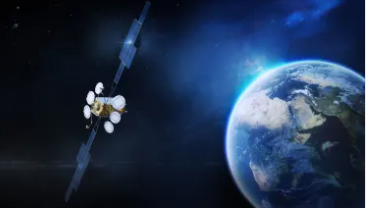-
+
1977-1989
The early yearsEutelsat is born out of an ambition to build a European industry in the manufacture, launch and operation of satellites.
The organisation first took shape in 1977 to operate the first generation of communications satellites ordered by the European Space Agency (ESA).
4Satellites launched-
1977
Creation of EutelsatThe creation of Eutelsat international organisation marks the beginning of Europe’s satellite communications services industry.
-
1983
Beginning of the satellite television businessThe first satellite, EUTELSAT I-F1, was launched in 1983.
This was the beginning of the satellite television business with the first transmission of a satellite TV signal on a commercial European satellite.
The first analogue channels quickly took advantage of this new opportunity to broadcast to consumers equipped with first-generation reception equipment.
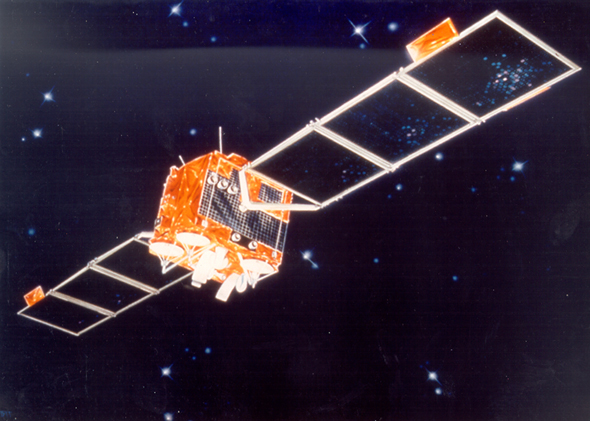
-
1988
EUTELSAT I satellite fleetThree further satellites launched in this initial series, the final one in 1988.
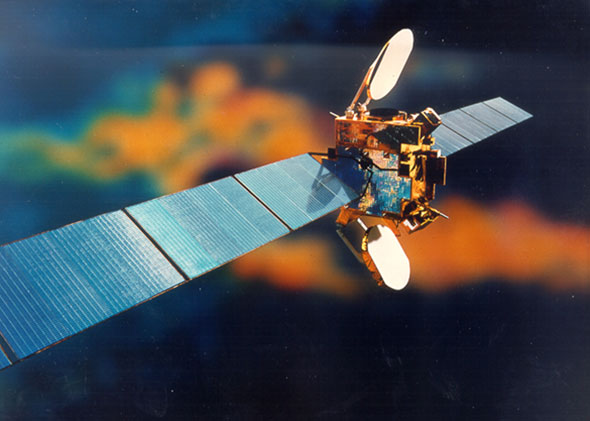
-
-
+
1990-2001
Growing upAfter the fall of the Berlin Wall, Eutelsat's original scope was transformed.
The organisation’s membership expanded eastwards from the early 1990s to include all Eastern European countries.
New satellites delivering higher capacity and wider geographic reach were launched during this period.
The satellite TV market rapidly expanded, pioneering the transition to digital in the middle of the decade which set the scene for the launch of multi-channel pay-TV platforms across Europe.
11Satellites launched-
1994
DVB-SFirst transmissions using the DVB-S standard.
-
1995
Launch of HOTBIRD 1Eutelsat successfully developed the HOTBIRD constellation of high-power satellites at 13° East, enabling hundreds of television channels to be broadcast to millions of homes via cable networks and Direct-to-Home antennas.
Development of earth-brightness-temperature model to estimate uplink performance.
Launch by Viacom of the first commercial TV platform in DVB-MPEG.
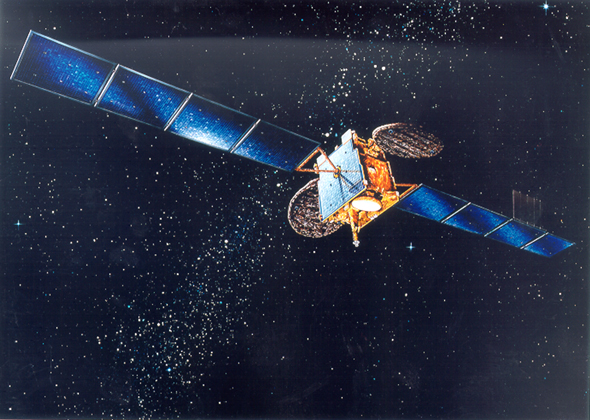
-
1996
Development of DiSEqCDiSEqC standard developed as a communication bus between satellite receivers and peripheral equipment using existing coaxial cables.

-
1997
Facilitating dual-feed receptionMonoblock LNBs were developed for dual-feed reception.
1995 to 1997 also saw the development and standardisation of the DVB-IP standard
-
2000
Europe’s first consumer internet service via satelliteLaunch of the first satellite with electrical propulsion for station-keeping (EUTELSAT 16C)
Maiden Atlas III rocket takes EUTELSAT 36A into space.
Launch of Europe’s first consumer internet service using satellite for downloads.
-
-
+
2001-2010
Going global and going publicWith the liberalisation of the telecoms sector, Eutelsat transformed into a private company in July 2001 and went public in 2005. Eutelsat’s activities diversified rapidly in the 2000s to include internet and government services.
The broadcast business continued its expansion with the HOTBIRD concept of broadcast satellites replicated at other positions to address markets in Russia, the Middle East, Turkey and Africa.
Geographic reach continued to expand across Africa, Asia and the Americas. By the end of the decade, offices had been opened in key European centres as well as Asia and the Americas. Teleports in France and Italy were also built up to provide broadcast and broadband services.
19Satellites launched-
2002
First satellite with digital onboard multiplexingHOTBIRD 13A, the first satellite with digital onboard multiplexing (Skyplex) and switching between Ku and Ka-bands goes into space on the maiden Atlas V flight.
Inaugural Delta 4 rocket orbits EUTELSAT 70A.
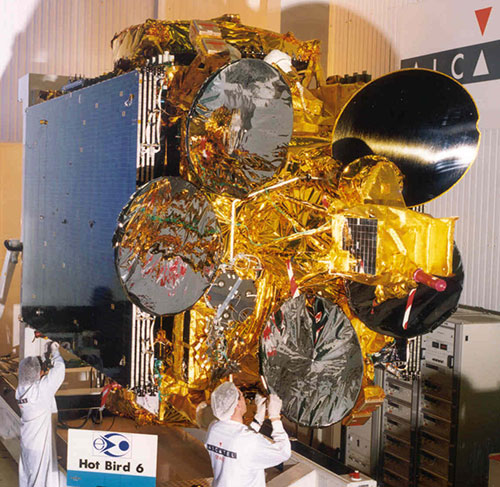
-
2003
Frequency reuseEUTELSAT 33A satellite launched with four regional Ku-band beams for high frequency reuse.
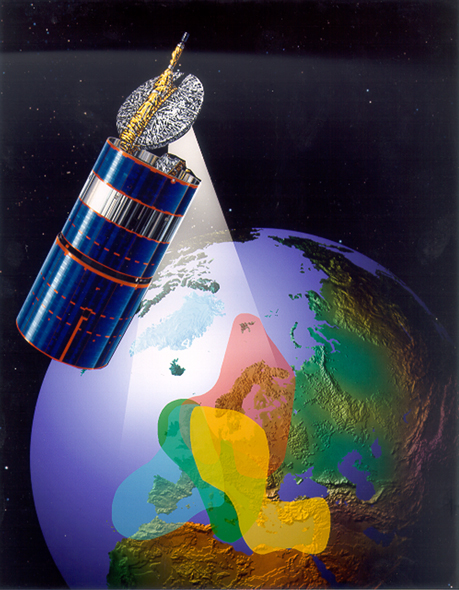
-
2004
Europe’s first HDTV demo channel in MPEG-2 DVB-SLaunch of first satellite with Lithium-Ion batteries (EUTELSAT 7A).
Launch on HOTBIRD of Europe’s first demonstration HDTV channel in MPEG-2 DVB-S.
-
2006
DVB-SHBetween 2006 and 2008, the DVB-SH standard for Direct Satellite Mobile Broadcasting was developed.
-
2009
Launch of FRANSATEUTELSAT 36B satellite carries first on-board multiplexing capability to increase uplink service area.
Launch of FRANSAT, a service operated on Eutelsat’s ATLANTIC BIRD 3 satellite giving satellite access in metropolitan France to all French free DTT channels
-
-
+
2010-2022
Stepping up our global reach and executing our telecom pivotEutelsat extends its premium coverage over Europe, Africa, the Middle East, Asia and the Americas.
Our continued growth is the consequence of a strategy focused on three key pillars: consolidating our leadership position in Europe and expanding our presence across the globe; targeting the development of digital services in the video market as well as in data and connectivity markets; and investing and innovating to renew our fleet of satellites and develop new applications and services.
15Satellites launched-
2010
Europe’s first High Throughput SatelliteKA-SAT, Europe’s first High Throughput Satellite, the highest capacity commercial satellite ever built, goes into space.

-
2011
Quality assurance of satellite transmissionsCarrier ID initiated for quality assurance of DVB satellite transmissions.
-
2012
Improving signal integrityEUTELSAT 8 West B - the first satellite ordered with improved signal integrity, optimised use of electrical power and frequency agile command receivers.
FRANSAT (Eutelsat’s French DTT platform via satellite) launches an integrated satellite receiver and DTT module in flat-screen displays.

-
2013
SmartLNB and Ultra HDEutelsat’s SmartLNB for Direct-to-Home antenna opens the door for broadcasters to operate linear television and connected TV services directly by satellite.
Eutelsat launches first demonstration Ultra HD channel.
-
2014
Europe's first Ultra HD demo channel in HEVCEutelsat steps up Ultra HD activity launching Europe’s first demo channel encoded in HEVC (High Efficiency Video Coding), broadcasting at 50 fps with 10-bit colour depth (one billion colours – HEVC Main 10 profile).
-
2015
First of a new generation of software-controlled satellitesWorld-first all-electric satellite, EUTELSAT 115 West B, enters service in late 2015.
Eutelsat QUANTUM contract signed - the first of a new generation of software-controlled satellite, developed through a PPP with ESA and Airbus Defence and Space.
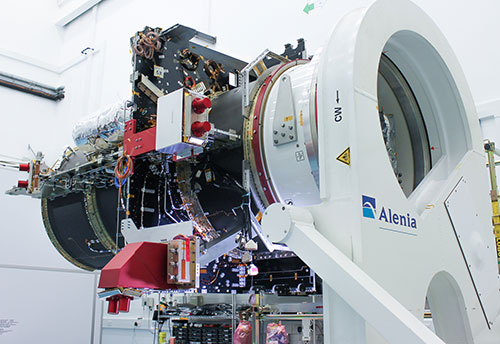
-
2016
Enhanced viewing solutionsEutelsat launches SmartBeam, the satellite solution for multiscreen TV delivery to smartphones and tablets.
Launch of Sat.tv smart EPG for HOTBIRD viewers.
-
2017
New HTS payload for Asia PacificEUTELSAT 172B satellite goes live at 172° East, embarking a new HTS payload for in-flight connectivity for users in a vast region stretching from the West coast of the Americas to Asia, Oceania and across the Pacific.
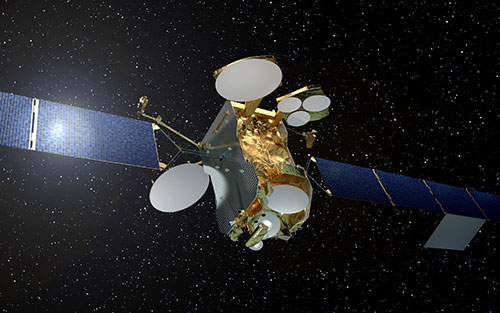
-
2018
New-generation VHTS ordered for EuropeOrder of KONNECT VHTS, a new-generation satellite, aimed at serving high-speed internet, in-flight connectivity and government markets with fibre-like services from 2021 onwards in Europe and the Mediterranean region.
-
2019
LEO satellite fleet for IoTEutelsat orders four nanosatellites to kick off its ELO constellation of LEO (Low Earth Orbit) satellites dedicated to the Internet of Things.
-
2021
Launch of QUANTUM and Eutelsat ADVANCEQUANTUM satellite: the first commercial Software Defined Satellite (SDS), reprogrammable in orbit, flexible in terms of coverage, power and spectrum reconfiguration.
Launch of Eutelsat ADVANCE: an end-to-end managed connectivity service.
-
-
+
2022-2023
A leap forward in satellite connectivityFollowing the signature of a Memorandum of Understanding in July 2022, Eutelsat and OneWeb announce a combination project, with the objective of creating a leading global player in Connectivity in an all-share transaction. Eutelsat prepares to combine its fleet of geostationary (GEO) satellites with OneWeb's constellation of Low Earth Orbit (LEO) satellites.
This transaction which builds on the deepening collaboration between Eutelsat and OneWeb, begun with the equity stake acquired by Eutelsat in OneWeb in April 2021, followed by the global distribution agreement between Eutelsat and OneWeb announced in March 2022, and the new exclusive commercial partnership addressing mainly the European and global cruise markets.
4Satellites launched-
2022
Exceptional launch of 4 satellites in 3 monthsEUTELSAT KONNECT VHTS for fixed broadband and mobile connectivity across Europe, North Africa and the Middle East. The largest geostationary satellite ever ordered to date in Europe.
HOTBIRD 13F and HOTBIRD 13G for video coverage at Eutelsat’s flagship 13° East neighbourhood
EUTELSAT 10B for mobile connectivity from the Americas to Asia
-
-
+
2023-Today
Eutelsat Group, a strategically positioned player in a fast-growing marketFormed through the combination of Eutelsat and OneWeb, Eutelsat Group is a global leader in the deployment of a GEO-LEO multi-orbit constellation designed to meet the rapidly expanding needs of the satellite connectivity market.
With a multi-orbit constellation fully operational on a global scale from end 2023, Eutelsat Group will gain a leading edge in the satellite industry thanks to its ability to offer innovative services that factor in the specific features of the LEO fleet, creating combined GEO-LEO offerings with significant added value to serve its global customers with services tailored to their needs and usage.
With a fleet of 34 Geostationary satellites and a Low Earth Orbit constellation of more than 600 satellites, Eutelsat Group addresses the needs of customers in four key verticals of Mobile Connectivity, Fixed Connectivity, Government Services and Video. Headquartered in Paris with more than 1514 employees in over 75 countries, Eutelsat Group is committed to delivering safe, resilient and environmentally sustainable connectivity to help bridge the digital divide.

